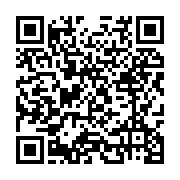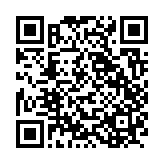Preserving a Passageway...
A lock on the future – Traversing the Fox ensured
By Pete Bach
When this historic lock opens its gates to the first boats of the season today a proud group of men and women will lead the procession in a figurative sense. Yet in a very real way, nonetheless, the first vessels through a thoroughly modern, renovated facility will be paced by the present and past members of the Berlin Boat Club, whose tireless efforts have led to a singular distinction: the private club is probably the only one in the United States to lease, maintain and operate a public lock.
The club, its volunteers and its financial supporters can take all the credit for seeing to it that wayfarers continue to traverse a scenic stretch of the Fox River between Berlin and points downriver.
The federal government closed the lock in 1951. But bit by bit, in fits and starts, the club struggled to get it reopened, finally meeting with success in the summer of 1958. “We got it reopened after a lot of red tape,” said Harold Vandenbergen, commodore of the Berlin Boat Club. “There’s always been a certain amount of bureaucratic pressure to close them.”
The Eureka Lock near this tiny hamlet in Winnebago County lies roughly midway between Berlin and Omro. Remarkably, the club has gone about operating and maintaining the lock – even rebuilding it from the top to bottom – with absolutely no state and federal money. Using a pontoon boat, the club also places navigational buoys along a 22-mile stretch of the upper Fox River between Berlin and Lake Butte des Morts, where Winnebago County takes over in seeing to it that buoys are placed upriver to Oshkosh, Lake Winnebago and river channels in Neenah and Menasha. A proud Vandenbergen and Robert Paugles, past commodore who heads up the buoy placement effort, showed a guest around Eureka Lock the other day, starting at Berlin’s picturesque Riverside Park.
There is a $3.00 round trip charge for using the locks. The lock tenders, Shirley and George DeCaluwe, live in the house at the site the year round.
One of the more recent wrangles involved liability insurance. In 1985, an insurer abruptly announced it was terminating coverage by the following April. For awhile no insurance company would touch it – not because of risk, says Vandenbergen – rather for lack of an industry-wide rate structure. After all, a private club that operates a lock for public boating is extremely rare to say the least. But the club persisted and, after six months, the company agreed to insure the lock operation. It’s been a year-to-year hassle since.
The club’s annual corn roast attracts thousands of visitors and hundreds of boats from points as distant as Green Bay to Riverside Park in Berlin. Many people camp out to enjoy a weekend spiced with good food, outdoor activities, a dance and good companionship. The big revenue producer raises about $7,000 annually for club projects, which include maintenance of the locktender’s house and property. The first corn roast on Aug. 22, 1956, held at Carter’s cottage, drew 22 boatloads of Oshkosh folks upriver to the Eureka Dam where they transferred to Berlin Boat Club vessels to reach the site of the outing. A total of 150 people consumed 600 ears of corn. All agreed at that fateful meeting to press for reopening the locks at Eureka.
In July 1957 came the historic occasion – the club signed a lease with the U.S. government to operate the lock. In November 1963, the government officially abandoned lockage facilities from Oshkosh to Portage. The old Wisconsin Conservation Department had accepted the transfer of upper Fox River facilities (Land and building, not the river) the previous year, however setting the stage for the late November 1963 signing of a new annual lease with the club to operate the lock.
Of all the projects undertaken by the club over more than three decades of operating the Eureka Lock, none was as ambitions as the reconstruction of the facility in 1976, coinciding with the centennial of the original lock opening. The scoffers came out in force when it was learned the renovation might top $75,000. At that point, the club had $18,000 in its treasury. Many bake sales, craft sales, dances and other fund raisers later, however, the skeptics retreated.
Renovation began in fall of 1976 with the erection of coffer dams. Huge diesel pumps
were set up to enable the 220-foot long, 35-foot wide and 16-foot deep lock to be dewatered. A hard core crew of 26 people collectively volunteered 3,000 hours for the task and stayed at it for eight months, often working until late into the evening after they had worked at their regular jobs. Old wooden sills were replaced, and old gates were removed, stripped of iron and replace with four new 10-ton gates built “in place” with tolerances measuring no more than a fraction of an inch. Douglas fir (beams) were installed. Helping were the U.S. Army Corps of Engineers, the state Department of Natural Resources and Courtney and Plummer (Co.) which donated a crane for the work. The last critical saw cuts to fit the gates were made on a January day when the mercury plummeted to 25 below zero.
Of all the locks between Berlin and Green Bay, the Eureka Lock is the only one to be electrically operated. (Thanks to Bob Paugels who did the work, according to interview done in 2011). Incidentally, the lock has made it onto the National Register of Historic Places. “Reconstructed to meet historical criteria, except we used modern tools and ideas.” It says in a club brochure.
The buoys, measuring about 10 inches in diameter, are surely not as brawny as the ones that chart turbulent waters at Lake Winnebago and the current-laden channels in Oshkosh, Neenah and Menasha. The club sees to it that 22 10-inch-diameter red and green navigations buoys and two white (slow, now wake) buoys are put in from Berlin downstream to Lake Butte des Morts along the Fox.
The Berlin Boat Club not only welcomes donations but makes them. It did that recently, parting with $550 to purchase a lighted buoy for the Friends of the Fox buoy committee.
The Eureka Lock is open on weekends and holidays between 9 am and 8 pm and weekdays by appointment with the CeCaluwe’s, the locktenders, at 685-6369.
_______________________________________________
Article by Dick Schramer - 2013
Eureka Lock – Berlin’s Navigational Gateway to the World
In 1876, the Eureka Lock was completed followed by the Eureka Dam in 1877 and by 1890 freight and passenger service flourished on the Fox River. In 1941, the Lock chamber was rebuilt, replacing the top 5 feet of limestone with cement. The Berlin Boat Club (BBC) formed in 1958 and leased the Locks from the Corp of Engineers and the state. The BBC renovated the lock chamber and rebuilt the doors in 1976 which lasted until 2003 when the lock doors became in operable and Wisconsin Department of Natural Resources (DNR) would not renew the lease. In 2009, the DNR razed the lock tender house because of the damage from two major floods in 2004 and 2008. A major donor was found in 2011 and a new lease was formed through the Town of Rushford and the DNR with the Berlin Boat Club to maintain and operate the Eureka Lock. In the fall of 2011, work began on rebuilding the lock doors & valves by the C.R. Meyer company and the BBC rebuilt the turn styles, rack gears, and motorized all four lock doors. The BBC also added a tender shack with power and lights. The BBC now staffs the locks on weekends and holidays from 9:00 AM to 8:00 PM from Memorial Day weekend to Labor Day weekend and by appointment (with 24 hour notice) from mid-May to mid-October by calling 920-361 BOAT (2628). Visit our web site at berlinboatclub.com for up-to-date information and many pictures of the restoration effort. The annual corn roast is held in Riverside Park as a fundraiser to help maintain the lock.
Join Family Membership
To Join the Berlin Boat Club Famiily Membership,
click the button for the link or use the QR code to join!
The Boat Club needs YOU!
or

Eureka Lock Donations
To Learn more and make a donation, click the button
or click your camera!
or

